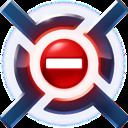 | ||
An uninstaller, also called a deinstaller, is a variety of utility software designed to remove other software or parts of it from a computer. It is the opposite of an installer. Uninstallers are useful primarily when software components are installed In multiple directories, or where some software components might be shared between the system being uninstalled and other systems that remain in use.
Contents
Generic uninstallers flourished in the 1990s due to the popularity of shared libraries and the constraints of then-current operating systems, especially Microsoft Windows XP. Declining storage costs and increasing capacity subsequently made reclaiming disk space less urgent, while end-user applications have increasingly relied on simpler installation architectures that consolidate all components to facilitate removal.
Components
Typical uninstallers contain the following components:
History
Uninstall was invented by Jack Bicer. While he was working on Norton Desktop for Windows at Symantec, Bicer came up with the Uninstall concept and developed the first Uninstall program in 1991. When published on March 23, 1992, NORTON DESKTOP FOR WINDOWS V.20 (see the official - README.TXT) was the first software package ever to include an Uninstaller, shown under the "UNINSTALLING NORTON DESKTOP" section.
After the release of Norton Desktop for Windows 2.0, Ken Spreitzer, who was a tester for the product at Symantec, capitalized on the uninstall idea and wrote the first widely used PC program called "UnInstaller", initially licensed to MicroHelp and then by February 1998 sold by CyberMedia. Microhelp published Spreitzer's program as Uninstaller version 1. In 1995, Spreitzer told The New York Times that the royalties he received from Microhelp for Uninstaller made him a millionaire by age 30. Tim O'Pry, while president of Microhelp, substantially rewrote the code for Uninstaller version 2, which became a best-selling program.
